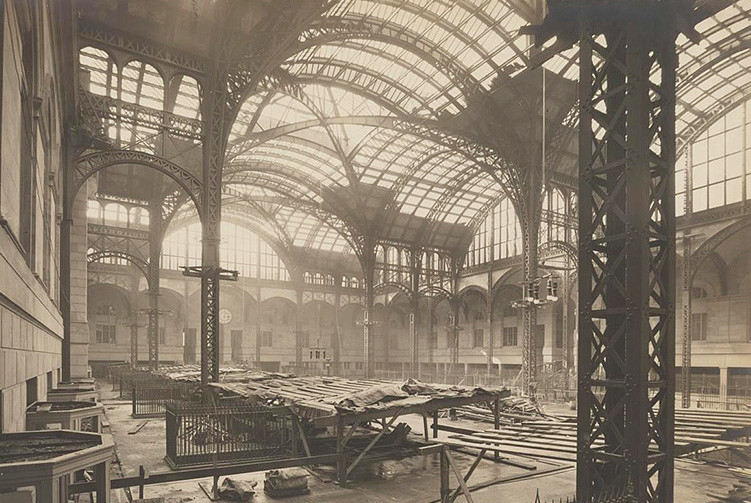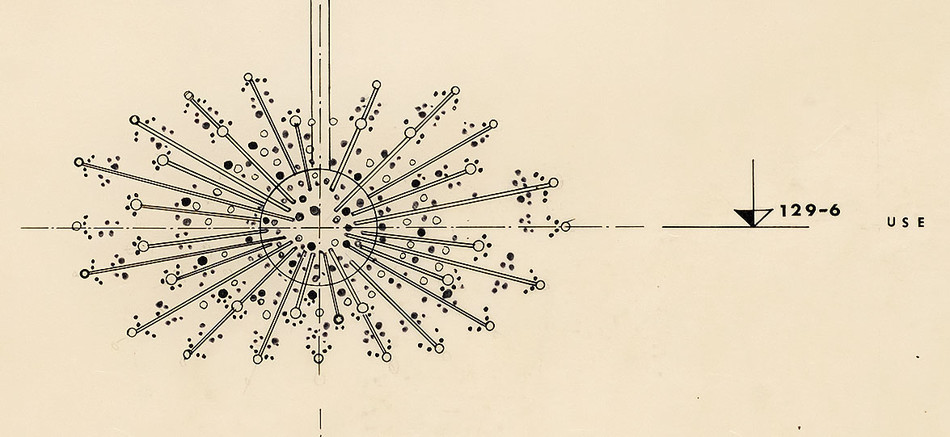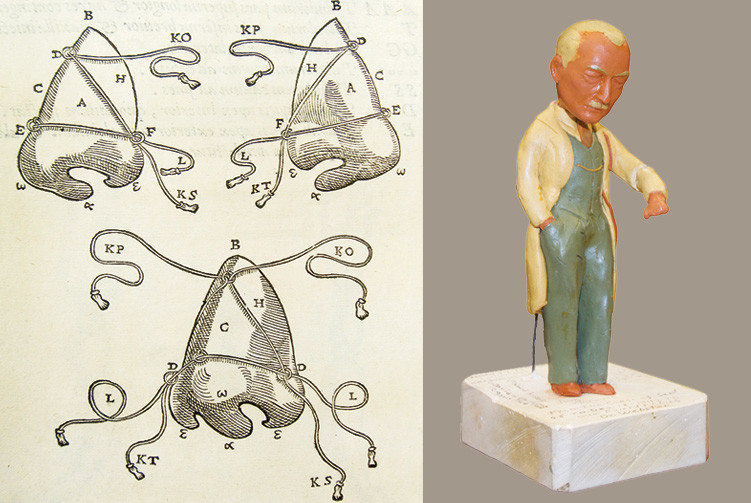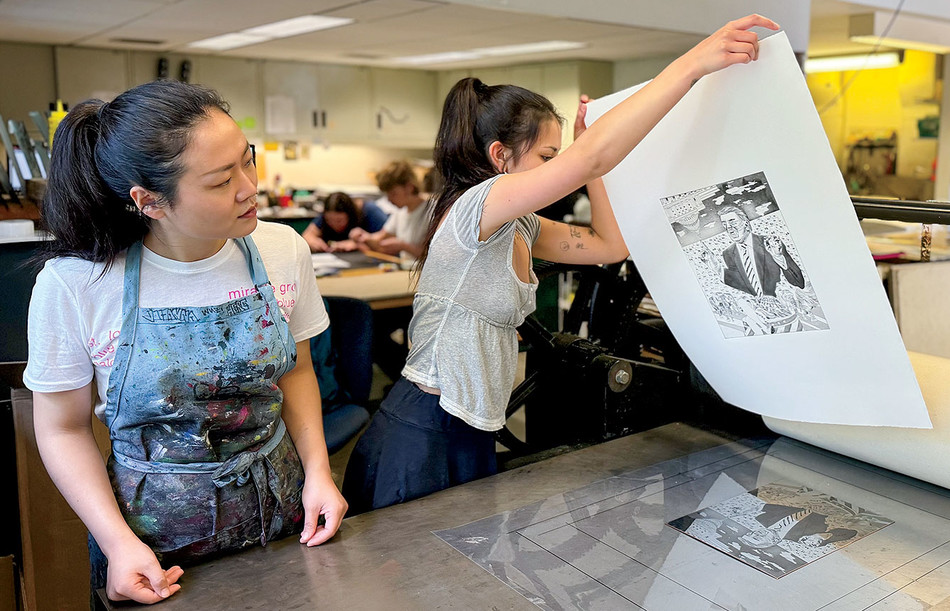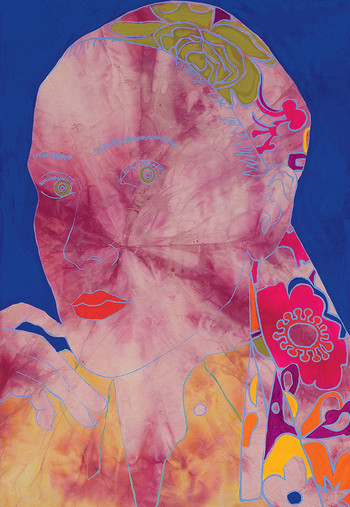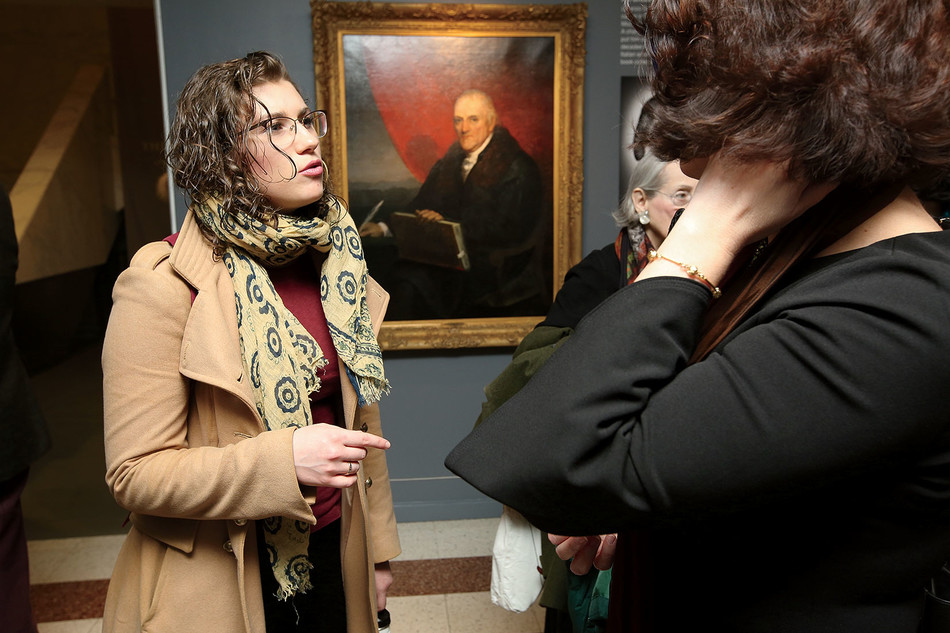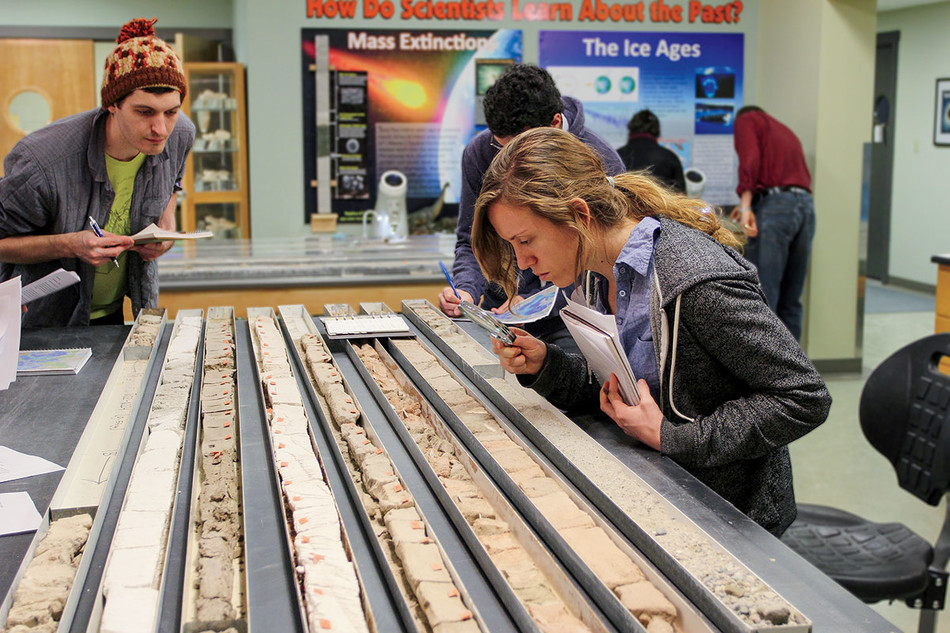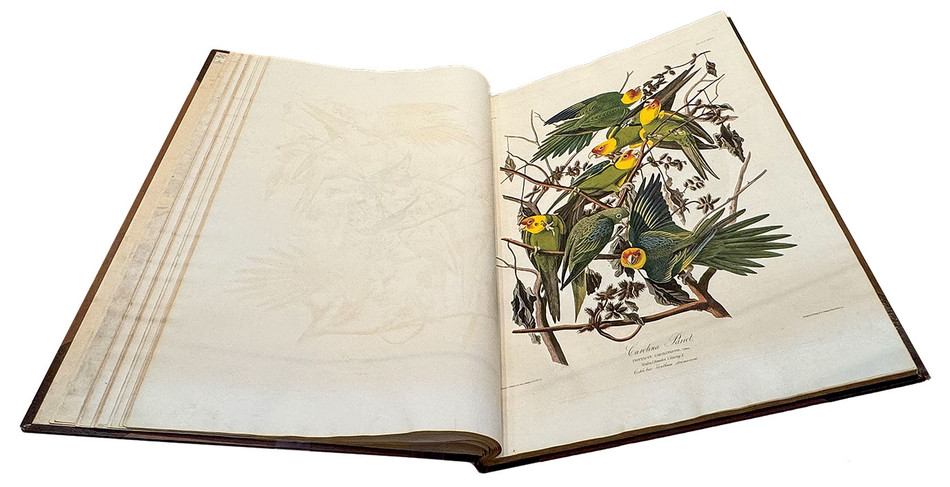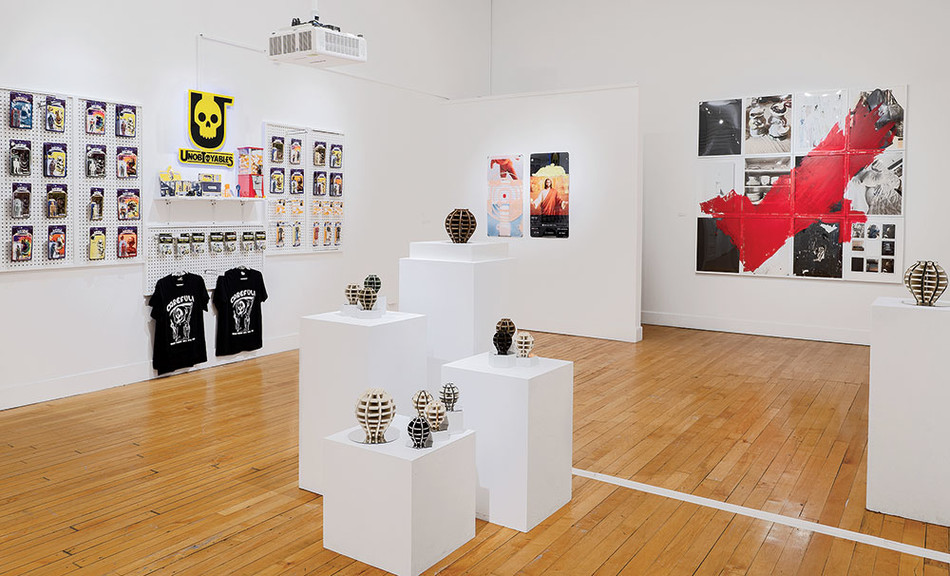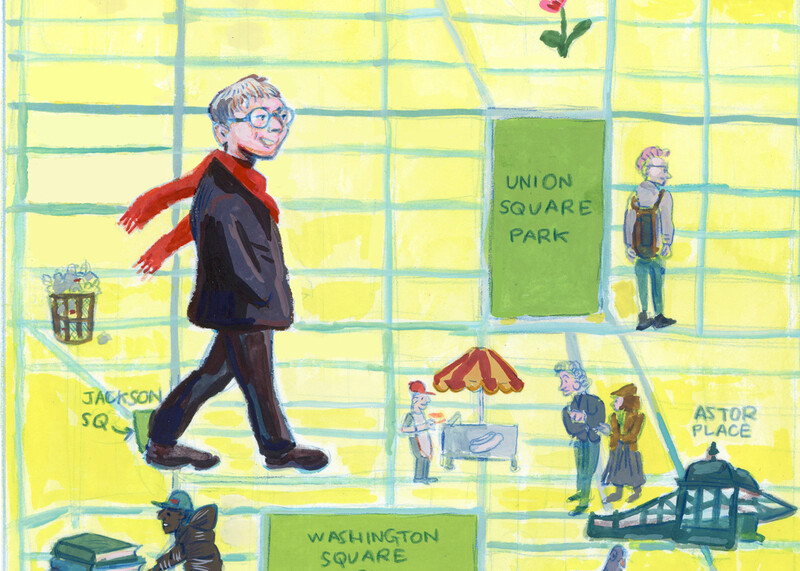7 Unique Collections to Visit at Columbia
Visitors hoping to see art on campus usually make their way to the Lenfest Center’s Wallach Art Gallery. With a full schedule of world-class exhibitions and a range of events and programs, it’s Columbia’s best-known public visual-arts space. But the University has plenty of other gems on display — from fascinating literary ephemera to blueprints for some of New York’s most beloved buildings to an archive of dirt that just might save the world. You only need to know where to look.
A Master Architect’s Plans
Avery Architectural and Fine Arts Library
Whether you’re bonkers for Beaux Arts or mad for mid-century modern, the basement of Avery Library is a treasure trove of architectural wonders. The crown jewel of the collection is the complete paper archives of Frank Lloyd Wright — 23,000 architectural drawings, over 50,000 photographs, more than 140,000 letters, and 2,785 manuscript drafts — which Columbia acquired in 2012. But Wright’s work is in good company at Avery, which holds the legacies of a pantheon of American architectural genius. Make an appointment to get a close-up look at Wallace K. Harrison’s drawings of Lincoln Center or the original renderings of Penn Station, designed by McKim, Mead & White. You can also drop by anytime to check out notable pieces that include blueprints for Wright’s Fallingwater, on display in the hallway outside the Drawings and Archives Room.
The Drawings and Archives Room is located on the second floor of Avery Library. The archives are available by appointment Tuesday through Friday, 1:00 p.m. to 4:00 p.m. As of August, the Frank Lloyd Wright Digital Archive is online.
Where to See an Elizabethan Nose Job
Long Health Sciences Library
The Archives and Special Collections department at Columbia University Irving Medical Center’s Long Health Sciences Library houses over 27,000 books, journals, and photographs covering the history of health sciences dating as far back as 1476. You can read the letters of Florence Nightingale, the founder of modern nursing, or delve into Sigmund Freud’s personal library. But perhaps the most unusual resource is the Jerome P. Webster Library of Plastic Surgery — the world’s most comprehensive collection on the subject. There are seven first-edition copies of Gaspare Tagliacozzi’s 1597 treatise De curtorum chirurgia per insitionem, the earliest published work on reconstructive surgery, and thousands of books, photographs, and drawings documenting the centuries of plastic surgery that followed.
The Archives and Special Collections are accessible by appointment only.
A Print Nerd’s Dream
LeRoy Neiman Gallery
For nearly thirty years, the LeRoy Neiman Center for Print Studies has been a place for students and professional artists to work side by side and share their art with the community. The grant that established the print shop also included money for an adjacent gallery space, which hosts a variety of exhibitions throughout the year, showcasing work by School of the Arts faculty and students, as well as pieces produced by guest artists. Stop in this fall to catch an exhibit of paintings by Heidi Howard ’14SOA, and be sure to peek into the windows of the not-for-profit print shop to see artists at work.
The LeRoy Neiman Gallery is located on the first floor of Dodge Hall and is open Monday through Friday, 9:00 a.m. to 5:00 p.m.
The Quickest Route to Europe
The Italian Academy
If a ticket to Rome isn’t in the cards, then perhaps console yourself with a visit to the Italian Academy on Amsterdam Avenue. Founded as Casa Italiana in 1927, with funds raised at a now-legendary thousand-person dinner of prominent Italian-American New Yorkers, its gracious building has provided space for scholarship, a robust fellowship program, events, and exhibitions. In two distinct gallery spaces on the first floor, the academy hosts rotating exhibits. This fall, a photography and video installation provides a fascinating introduction to the archaeological site of Su Nuraxi di Barumini, in Central Sardinia, which features one of the best-known examples of a nuraghe, a distinctive Bronze Age defensive structure. In the gallery next door, get a quick introduction to the academy’s history through a display of photos, including one of the massive dinner party that started it all.
The Italian Academy’s ground-floor galleries are open to visitors Monday through Friday, 10:00 a.m. to 4:00 p.m. Buzz at the street entrance for access.
Where to Dig in the Dirt
Lamont-Doherty Core Repository
Cross over the George Washington Bridge and head north along the Palisades to find one of Columbia’s most unusual libraries. The Lamont-Doherty Core Repository houses over 20,000 marine sediment and rock samples, including specimens from every major ocean and sea on earth. Curator Nichole Anest — or “the mud librarian,” as she calls herself — says that these unassuming tubes of dirt may be “the keys to understanding climate change.” The sediment cores are made up of the debris that settles on the ocean floor, including the remains of microscopic organisms. While similar sediments exist on land, underwater specimens are far more valuable, because they’ve been untouched by weather and human wear and tear. By studying marine sediment cores, scientists can not only learn about the history of the earth’s climate dating back thousands of years but make predictions about our climate future.
The Lamont-Doherty Core Repository hosts visits from school groups, special-interest groups, and the general public. To schedule a visit, contact corelab@ldeo.columbia.edu.
The Room Where It Happens
Rare Book and Manuscript Library
Do you want to see a copy of the King’s College roster from 1774, featuring future Founding Father Alexander Hamilton? Or read letters by his rival Aaron Burr? Perhaps you’re in the mood for a laugh, and the very first Mad magazine fold-in is what you’re after. Maybe you’re a Broadway fan wanting to check out Patti LuPone’s scrapbook collection.
You can find it all on the sixth floor of Butler Library, where the Rare Book and Manuscript Library boasts an enviable collection of primary-source material. You’ll need to make an appointment to see most of the holdings. But for a more casual experience, the exhibition cases outside the reading room showcase plenty of highlights.
Stop by any time the library is open to see some of the permanent display pieces — like a stunning original folio by John James Audubon or the mantlepiece from the room where Edgar Allan Poe composed “The Raven” (chamber door unfortunately not included). Other cases might highlight items from the library’s extensive collection of comic books and graphic novels, such as a display of “fanzines” acquired in 2020.
The library is currently featuring the exhibit “Extras Between the Sheets,” a selection of unexpected items accidentally left in books or boxes being transferred to the library. There are pressed flowers and feathers but also an invitation to Aaron Copland’s birthday party, a Christmas card with an etching of Sing Sing prison, and, perhaps most surprising, a prescription made out to Tennessee Williams for Seconal, the very drug that would end up killing him.
The Rare Book and Manuscript Library is on the sixth floor of Butler and is open Monday through Friday, 10:00 a.m. to 4:00 p.m. Most materials can be seen by appointment only.
The Best-Kept Secret
Macy Art Gallery
Tucked away in the maze of interconnected Gothic halls at Teachers College is a large suite of windowless rooms that Jennifer Ruth Hoyden calls “Columbia’s best-kept secret.” Hoyden, a doctoral candidate in the college’s art and art education program, is the coordinator of the Macy Art Gallery, one of Columbia’s oldest and most storied exhibition spaces.
The gallery was established in the early years of the twentieth century by fine-arts department chair Arthur Wesley Dow, who envisioned a studio and gallery existing side by side. He wanted to teach his students — including the then unknown artist Georgia O’Keeffe — to understand the relationship between making and displaying art.
Today those lessons live on. The Macy Art Gallery is staffed by doctoral students, who are responsible for selecting, curating, installing, and promoting the shows. And while the gallery does display work by faculty, alumni, and the occasional non-Columbia-affiliated artist, the bulk of the exhibitions are student work. With shows featuring advanced pieces from Teachers College’s studio courses and winners of the school’s annual Myers Art Prize, the gallery is one of the best places on campus to see innovative student-made art.
The Macy Art Gallery is located on the fourth floor of Macy Hall and is open Monday through Friday, 11:00 a.m. to 6:00 p.m., and by appointment.
This article appears in the Fall 2024 print edition of Columbia Magazine with the title "Cool Collections to See on Campus."
